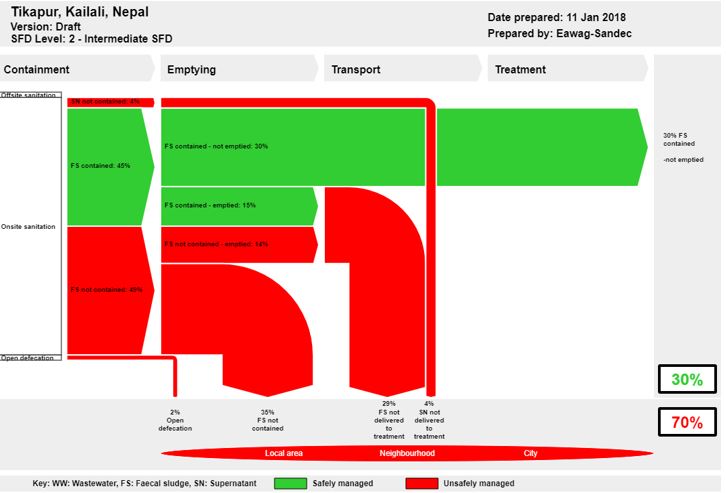Urban Sanitation and the SFD Approach
Safe water and adequate sanitation are indispensable for healthy ecosystems, reducing poverty, and achieving inclusive growth, social well-being and sustainable livelihoods (UN website).
- 2.4 billion people lack access to basic sanitation services (toilets, latrines)
- Nearly 1,000 children under the age of five die daily due to preventable water and sanitation-related diarrhoeal diseases
- By 2030, almost 60 percent of the world’s population will live in urban areas
- 95 percent of urban expansion over the coming decades will take place in the developing world
- Rapid urbanization is exerting pressure on […] sewage, the living environment, and public health.
A first step towards providing adequate sanitation services in urban areas is to monitor the sanitation service chain, to identify its strengths and weaknesses, from containment, including emptying, transport, treatment and safe disposal or resource recovery. SFDs can help achieve this by offering a new and innovative way to engage sanitation experts, political leaders and civil society in coordinated discussions about excreta management in their city.

SFD for Tikapur, Nepal (Eawag-Sandec, 2018)
Why prepare an SFD?
- An SFD presents a clear picture of how wastewater and faecal sludge management (FSM) services are delivered in a city, and the resulting challenges.
- The SFD is a diagnostic tool that helps to identify the aspects of service delivery where improvements are needed.
- An SFD primarily provides technical and non-technical stakeholders with an advocacy tool to support decision-making on urban sanitation planning and programming.
- Importantly, an SFD does not provide a “shortcut” around integrated sanitation planning, promotion, investment, design, construction, operation and maintenance. These remain very necessary components for implementing successful urban sanitation.


